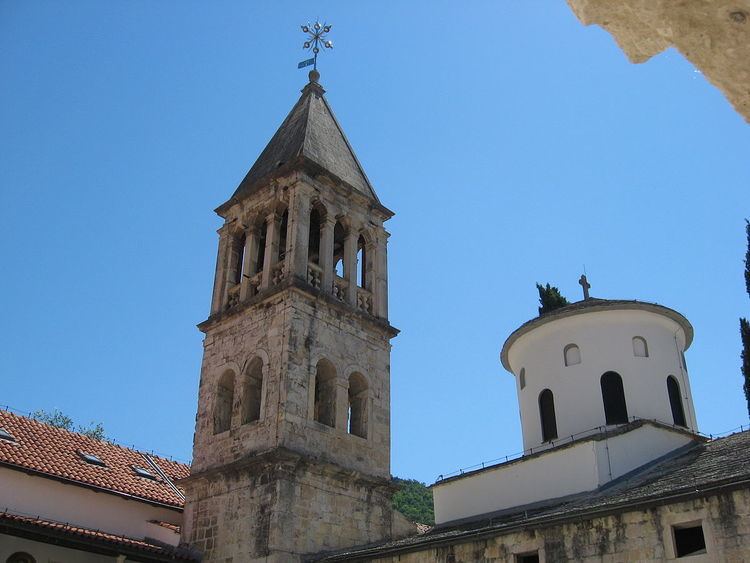Founder Jelena Nemanjić Šubić | Established before 1345 Public access Yes | |
 | ||
Similar Dragović monastery, Krupa monastery, Visovac Monastery, Gomirje Monastery, Krka | ||
Krka monastery krka national park croatia
Krka Monastery (Croatian: Samostan Krka, Serbian Cyrillic: Манастир Крка) is a Serbian Orthodox monastery dedicated to the Archangel Michael, located near the river Krka, 3 km east of Kistanje, in central Dalmatia, Croatia. It is the best known monastery of the Serbian Orthodox Church in Croatia and it is officially protected as part of the Krka National Park.
Contents
Krka monastery
History
The oldest extant mention of the monastery was in 1345, when it is listed as an endowment of princess Jelena Nemanjić Šubić, half-sister of the Serbian emperor Dušan and wife of Mladen III Šubić Bribirski, local duke of Skradin and Bribir. The monastery was built on top of a Roman site, and Roman burial catacombs exist beneath a part of the church.
The current church of St. Archangel was erected in 1422 on the location of an earlier Gothic structure. Ottoman Turks devastated the church around 1530 but it was restored on several occasions. Other monastery buildings (18th–19th century), the church, and the bellfry are situated around a rectangular cloister with arcades.
In mid-17th century monks were forced to flee from the Ottomans and found shelter in Zadar, where pope Innocent X in 1655 gave them two churches, that had previously been in possession of Franciscans of the Third Order, named "Glagolitians" (glagoljaši) . In a subsequent agreement with the Franciscans, the monks declared that they "live in the service of the Greek Church, the old illyrian language."
After Operation Storm in 1995 the monastery was looted, but not significantly, as it was protected by the Croatian authorities, abandoned, and the seminary shut down and relocated to Divčibare and, later, Foča. The monks returned in 1998, however, and the seminary reopened in 2001.
Architectural features
The belltower of this monastery was built in the Romanesque style. The complex also includes a chapel of Saint Sava built in the 19th century, under the tutelage of the Serbian Orthodox Bishop of Dalmatia Stefan Knežević, as well as a new building of the seminary and an additional dormitory building. The monastery has its archives and a library with a variety of ancient books and valuable items from the 16th to the 20th century, a collection of wooden icons (St. John the Baptist from the 14th or 15th century, work by the so-called Master of the Tkon Crucifix), silverware and embroideries.
